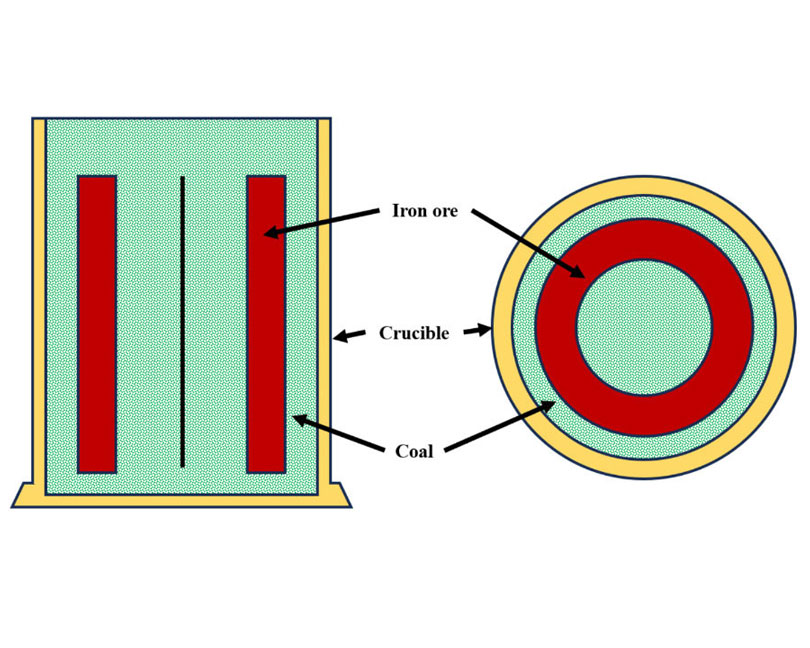Optimization of direct reduction in tunnel furnace using different resources of ferrous oxides
- 1 Construction and Minerals Research Group, Technology and Engineering Research Center, Standard Research institute, Karaj, Alborz, Iran
- 2 Ceramic Department, Materials and Energy Research Center, Karaj, Alborz, Iran
Abstract
Nowadays it is highly desired to maximize using of existing resources and recycle waste materials. The by-product of steel being hot rolled is mill scale that disposing of it as waste material has environmental effects. Therefore, the use of mill scale in iron production is economically and environmentally beneficial. In the current work, an attempt has been made to use mill scale and iron concentrate which are not applicable to pelletized, in the reduction process with tunnel kiln for iron manufacturing. Non-coking coal and limestone were utilized as reducing agents. The reluctant to ferrous oxide ratio was kept constant during the reduction tests. The reduction process was carried out in a crucible at 1150 °C. The analyses of the metal Fe content in the reduced samples show that the mill scale can be used successfully in the direct reduction process to produce sponge iron. In the rolling mill scale-iron pellet, iron concentrate-iron pellet, and iron concentrate-mill scale mixtures, the compositions 70MS-30IP, 70IC-30IP, and 70IC-30MS were optimum. The result of XRD and STA results revealed that the optimal heat treatment setting for reducing utilized ferrous oxide mixtures is 1150 °C for 1 h.
Downloads
References

Copyright (c) 2023 Sara Ahmadi, Hossein Nuranian

This work is licensed under a Creative Commons Attribution 4.0 International License.
Copyright
Authors are the copyright holders of their published papers in Synthesis and Sintering, which are simultaneously licensed under a Creative Commons Attribution 4.0 International License. The full details of the license are available at https://creativecommons.org/licenses/by/4.0/.
All papers published open access will be immediately and permanently free for everyone to read, download, copy, distribute, print, search, link to the full-text of papers, crawl them for indexing, pass them as data to software, or use them for any other lawful purpose without any registration obstacles or subscription fees.












